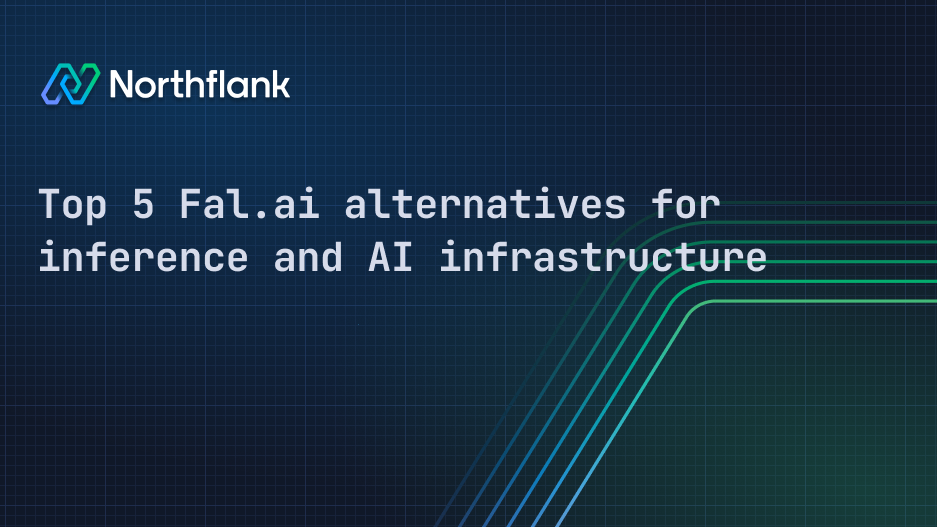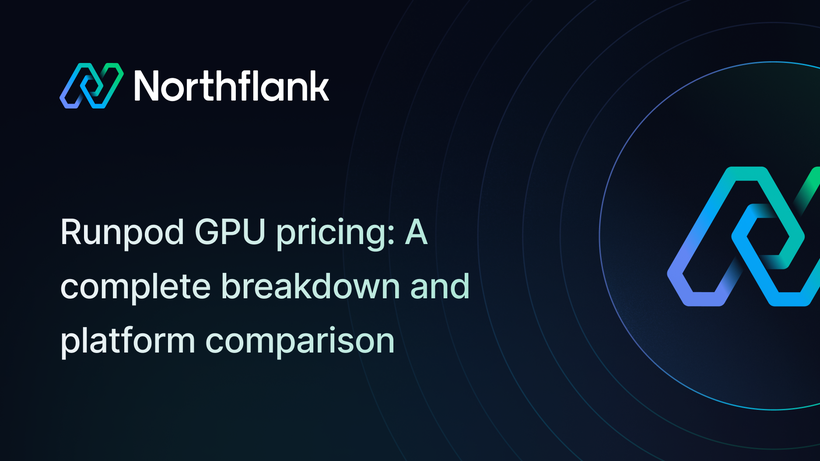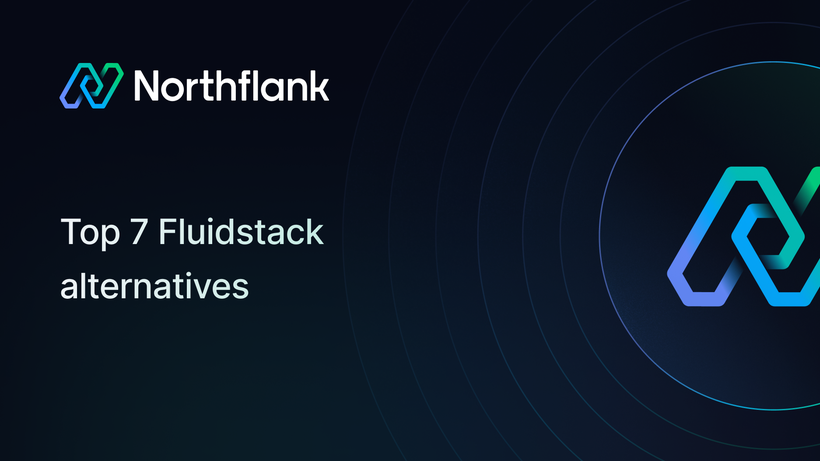

Top 5 Fal.ai alternatives for inference and AI infrastructure
Let’s be clear upfront: Fal.ai is excellent at what it’s built for. If you’re deploying open-source LLMs and want the lowest possible latency with zero infrastructure overhead, Fal is a strong choice. It’s fast, clean, and highly optimized for running models like LLaMA and Mistral with custom drivers and tuned inference runtimes.
But you’re here looking for Fal.ai alternatives.
Maybe you’ve hit a wall on pricing, flexibility, security, or control. Maybe you’re building more than an inference endpoint and need a platform that supports the rest of your app stack too. Whatever the case, we’ve pulled together the top Fal alternatives, each with different tradeoffs depending on your goals.
Fal.ai is a developer platform focused on low-latency, serverless model inference. You send a request to an endpoint, and Fal handles the rest: model loading, execution, GPU orchestration, and response. It’s used heavily for serving open-weight LLMs like LLaMA, Mistral, and Mixtral, often via frameworks like llama.cpp or GGUF-based runtimes.
Key features:
- Inference-optimized backends with support for quantized weights and model-specific optimizations
- Cold start minimization using smart pooling and preloading
- Simple deployment via CLI or GitHub integration
Where Fal shines is in raw performance for model inference. But it’s less ideal if:
- You need to host your own stack or run in your own VPC
- You want to run multiple services, not just models
- You’re doing fine-tuning, agentic workloads, or secure internal tooling
- You need more observability, debugging, or enterprise controls
Here are the best platforms to consider depending on what you’re building.
Northflank is the best alternative if you're building a real product around LLMs, not just calling a model. It’s designed for teams that need strong infrastructure, real security guarantees, and predictable scale.
Let’s be upfront: Northflank won’t beat Fal on model-specific benchmarks. Fal is optimized at the driver level. But if you're deploying with vLLM, TGI, or similar inference runtimes, and you combine that with autoscaling and storage optimization, you're going to get within striking distance on performance, and gain a ton of flexibility.
Why teams choose Northflank:
- Support for all GPU types: A100s, H100s, L4s, 4090s, run the same stack across them.
- Best-in-market GPU pricing: Northflank offers enterprise GPU pricing without the commitment.
- Spot and reserved instance support: Optimize for either cost or stability.
- Secure multi-tenant runtime: Runs each service in an isolated sandbox with enforced resource boundaries. Perfect for running untrusted or AI-generated code.
- Bring your own cloud (BYOC): Deploy directly into your AWS/GCP with full VPC isolation and data control.
- Built-in autoscaling: Handle bursty inference workloads or long-running agent chains with clean scale-up/scale-down behavior.
- Everything else included: Databases, queues, background jobs, APIs. Northflank handles your full infra stack.
- Production-grade CI/CD: Built-in pipelines, preview environments, Git integrations, and automatic rollbacks.
It’s the only platform on this list that can serve LLM endpoints, background agents, a vector DB, and your UI layer in the same stack, across dev, staging, and prod environments.
Best for: LLM startups, agentic systems, self-hosted eval/test infra, BYOC production deployments. Basically, teams building real LLM products who need CI/CD, full-stack infra, GPU flexibility, and secure deployment.
Not for: Researchers chasing token-per-second benchmarks with custom compiled backends
Read more: Weights uses Northflank to scale to millions of users without a DevOps team
RunPod gives you cheap, bare-metal access to high-end GPUs with minimal abstraction. You pick your machine, spin up a pod, and run whatever model you want.
What makes RunPod stand out:
- Decentralized compute: Leverages idle capacity from providers around the world
- Custom runtimes: Bring your own Docker container and scripts
- Community templates: Ready-to-deploy containers for LLaMA, Mistral, Stable Diffusion, and more
You’re not getting a serverless platform or a pretty UI. But if you want to control exactly how your LLM runs and save on cost, especially for batch workloads or long-running agents, RunPod is a strong option.
Downsides: No real observability, no native autoscaling, no full-stack support. You're responsible for securing everything.
Best for: Budget-conscious teams running training, evals, or inference-heavy workloads.
Not for: Production teams that need managed infrastructure, logs, or scaling policies
Baseten is designed to make it easy to turn ML models into production-ready APIs, especially for teams who care about UX and product polish.
You bring your model (or pick from a model zoo), and Baseten gives you:
- Fully managed endpoints with autoscaling
- Dashboards and observability out of the box
- Built-in rollouts, testing, and versioning
- UI-based workflows for teams that don’t want to touch Terraform
It supports common LLM runtimes like vLLM, Hugging Face Transformers, and custom PyTorch. You can deploy endpoints with a few clicks or through CI/CD.
Where Baseten differs from Fal:
- It’s less about latency extremes, more about developer experience and product lifecycle
- You can connect models to React frontends, cron jobs, or stream processors
- You don’t get Fal’s tight GPU-level optimization, but you get a lot more flexibility
Best for: Startups turning models into real user-facing features with clean ops
Not for: Teams who want to run everything in their own cloud or tune infra at the driver level
Modal is infrastructure for Python-based ML apps, built around the idea of writing code that defines and deploys your workloads in one place.
Key advantages:
- Functions-as-a-service model for both CPUs and GPUs
- Lightning-fast spin-up times using container caching
- Easy parallelism for LLM inference, eval loops, or post-processing
You can deploy LLM endpoints, batch jobs, or even orchestrated chains, directly from your Python codebase. Modal is great if you want to move fast without worrying about containers and servers.
The downside: it’s not designed for long-lived, stateful services. And BYOC isn’t supported.
Best for: ML engineers who want clean code-first infra for serving models or running pipelines
Not for: Enterprises or infra-heavy teams needing deeper control, observability, or cloud choice
Banana makes it easy to turn an LLM model into a hosted API with minimal setup. You push a repo, Banana handles the deployment, GPU allocation, and autoscaling.
Highlights:
- CLI and GitHub integrations
- Native support for vLLM, Transformers, and Diffusers
- Zero-config deployments for common models
- Pricing optimized for short inference jobs
It’s one of the simplest ways to stand up a hosted LLM API. If you’re a solo dev or small team trying to ship fast, Banana keeps infra out of the way.
Where it falls short:
- Not built for complex workflows or agentic systems
- Limited observability and debugging
- No BYOC, no enterprise-grade isolation
Best for: Solo hackers, early MVPs, small AI apps
Not for: Teams scaling into production or managing multiple services in one stack
If you’re chasing benchmark performance on a single model, Fal.ai is still the most optimized option. But if you’re building a real product, something with users, teams, environments, and a roadmap, Northflank is the platform to bet on.
It’s the only alternative that gives you:
- Full-stack deployment: APIs, workers, databases, queues, and model inference, all managed in one place
- Enterprise-grade GPU support with the best pricing on A100s, H100s, L4s, and spot instances
- Real CI/CD, secure multi-tenant runtimes, and BYOC deployment into your own cloud
- Infra that scales with you from early build to enterprise rollout
If you’re serious about shipping and scaling LLM applications, Northflank is the most complete platform on the list.
The rest have their use cases:
- RunPod is great for cheap GPU training and batch work, but you’re managing the infra yourself.
- Baseten is smooth for iterating on model-backed features, but you’ll hit limits if you need custom infra.
- Modal is elegant for Python-based workflows, but not ideal for multi-service deployments.
- Banana is great for quick launches, but not built for long-term scale or control.


